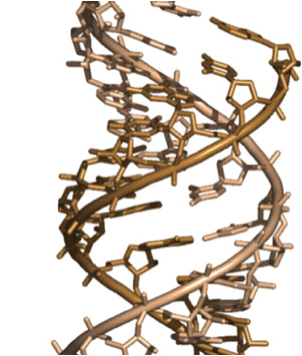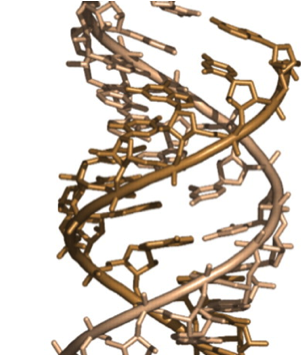A tale of two nucleic acids
The information-bearing biological molecules, DNA and RNA, both coil into negatively charged double helices when complimentary strands pair up. But under conditions where positive ions from the surroundings allow double-stranded DNA to condense from solution, double-stranded RNA stays dissolved. The difference illustrates the subtlety of the biologically significant interactions between these molecules.
The messenger RNA that transfers genetic information from DNA into protein sequence consists of a single strand. But in other biological roles, RNA forms paired chains with complementary sequences, like its DNA cousin. The slightly different chemical backbone of RNA leads to a different double-helix structure, however. Using small-angle x-ray scattering, Li Li and colleagues from Cornell University had previously found that this structure allows triply charged positive ions to screen the negative charge more efficiently in RNA than in DNA. But in Physical Review Letters, the group reports that even though double-stranded RNAs associate more readily, they remain in solution in conditions where double-stranded DNA condenses. The researchers find that two rather different models of how the molecules and ions nest together can make sense of this surprising observation.
Clarifying how the detailed interactions sometimes lead to condensation should help biologists to characterize the many biological functions of RNA, and could also help researchers devise better ways to deliver double-stranded RNA to cells for therapy. – Don Monroe





